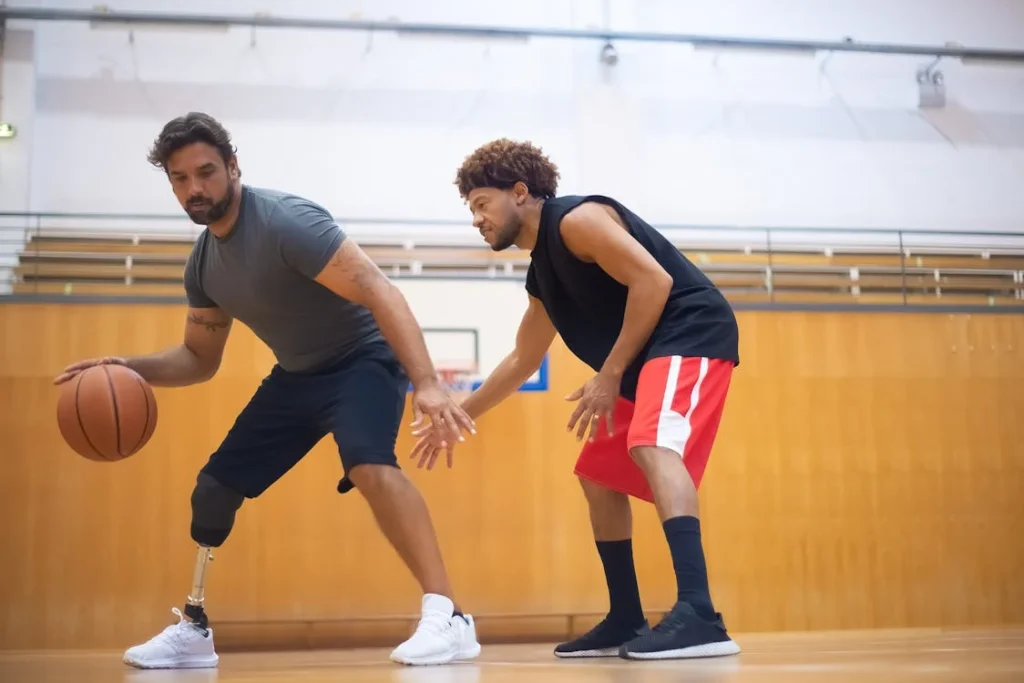For athletes with limb loss, the right prosthetic can mean the difference between struggling on the field and excelling in their sport. Bionic prosthetics, with their advanced technology and responsive design, have revolutionized mobility for many users. But do they truly offer the best performance for sports? Can a bionic limb match the agility, speed, and endurance required in competitive athletics?
These are questions that many athletes and sports enthusiasts ask. While traditional sports prosthetics have been around for years, bionic limbs introduce a new level of functionality. They can mimic natural movements, adjust to different activities, and provide real-time feedback, making them an exciting option. However, they also come with their own set of challenges, including durability, cost, and sport-specific limitations.
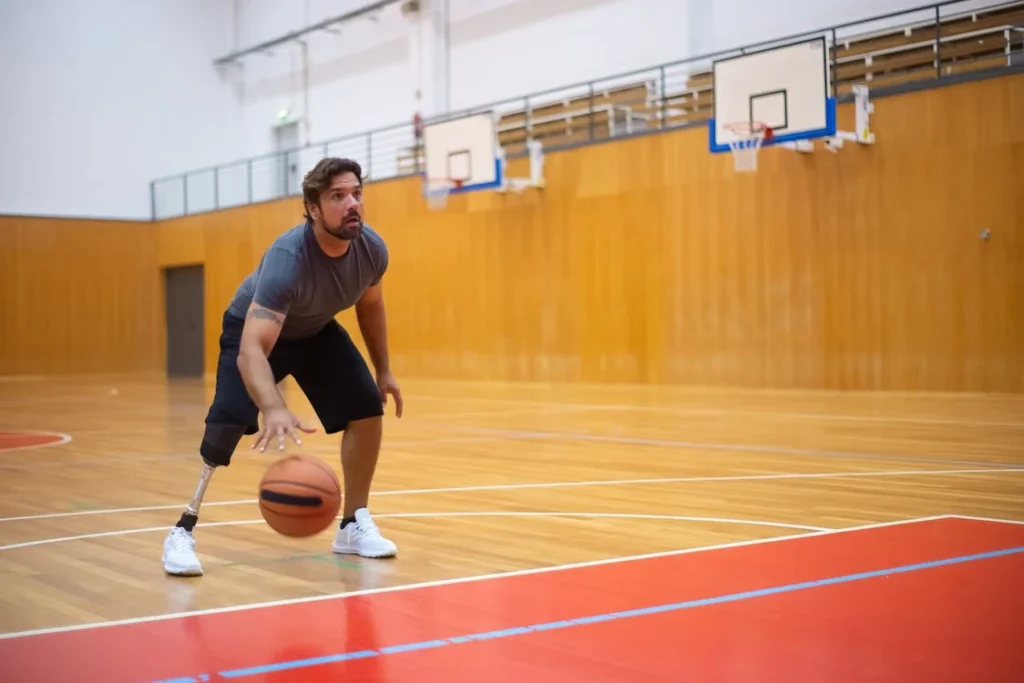
How Do Bionic Prosthetics Work in Sports?
Bionic prosthetics use advanced robotics, sensors, and AI-driven technology to replicate the movement of a natural limb.
Unlike traditional prosthetics, which rely on mechanical movement, bionic limbs are designed to respond to muscle signals, electrical impulses, or pressure sensors. This allows for a more natural and fluid motion, making them especially useful for daily activities.
In sports, this technology plays a crucial role in helping athletes regain lost abilities. A bionic leg can adjust its stride based on terrain, while a bionic hand can grip equipment with precision.
These features allow athletes to compete at higher levels and engage in sports they may have thought were impossible after limb loss.
One of the biggest advantages of bionic prosthetics is their adaptability. Many devices offer customizable settings, allowing users to fine-tune their prosthetic for different sports.
A runner may need a different response speed than a cyclist, and modern bionic limbs can be programmed to meet these needs.
However, while these advancements are impressive, bionic limbs are not yet perfect. Sports require extreme durability, impact resistance, and rapid movements that may not always align with the delicate sensors of a bionic prosthetic.
Athletes must weigh these factors when choosing the right limb for their specific sport.
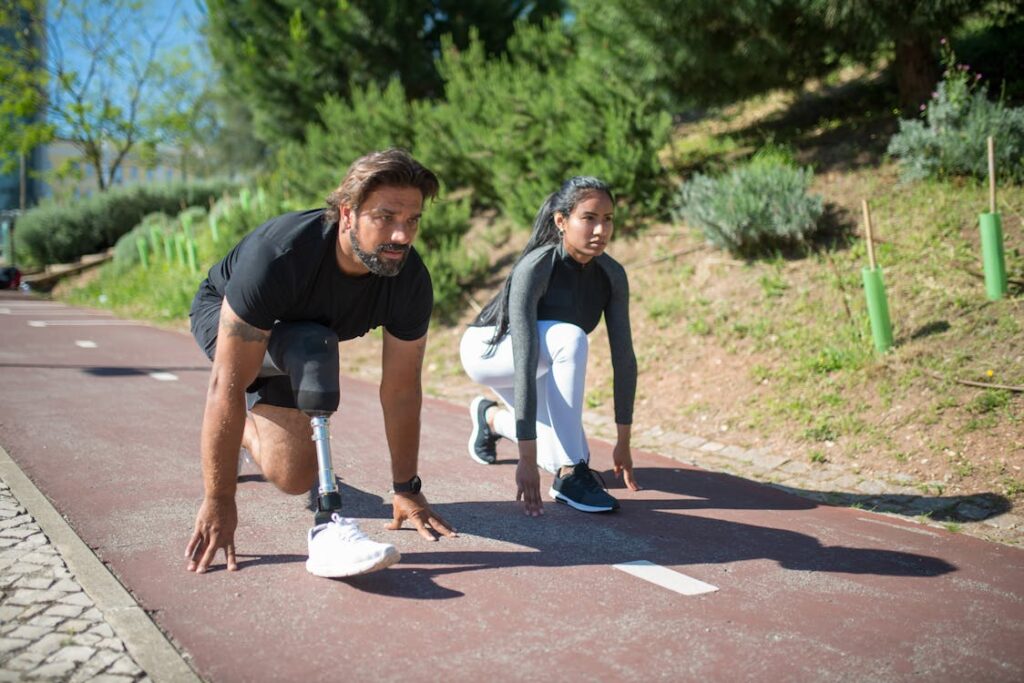
Advantages of Bionic Prosthetics for Athletes
Bionic prosthetics have brought a new level of performance and independence to athletes with limb loss. Their ability to integrate with the body’s natural movements offers significant benefits in sports, making them a compelling choice for many athletes.
From improved control to enhanced adaptability, bionic limbs provide advantages that traditional prosthetics cannot match.
Better Control and Precision
One of the standout features of bionic prosthetics is the ability to respond to muscle signals or neural commands. This means that movements are more precise and natural, allowing athletes to have better control over their actions.
A bionic arm, for example, can adjust grip strength based on the pressure applied, which is particularly useful for sports like weightlifting, rock climbing, or tennis.
This fine-tuned control gives athletes a competitive edge by allowing them to perform tasks with accuracy and confidence.
For runners and cyclists, bionic legs can adapt to different speeds and terrain conditions. Some models even feature microprocessors that analyze movement patterns and adjust in real time.
This level of responsiveness helps athletes maintain balance, reduce strain, and optimize their energy use, which is essential for endurance sports.
Increased Adaptability for Multiple Sports
Unlike traditional prosthetics, which are often designed for a single function, bionic limbs can be programmed for multiple activities. Many advanced prosthetics allow athletes to switch between different settings, making them suitable for various sports.
A single bionic leg could have settings for sprinting, jogging, and walking, while a bionic hand might switch between a grip for weightlifting and a more delicate grip for handling sports equipment.
This adaptability makes bionic prosthetics highly versatile, allowing athletes to participate in a range of activities without needing multiple devices. As technology improves, more sports-specific features are being integrated into these prosthetics, further expanding their usability.
Improved Endurance and Energy Efficiency
Traditional prosthetics often require more effort to use, leading to increased fatigue over time. Bionic prosthetics, on the other hand, are designed to assist movement rather than just compensate for lost function.
With built-in microprocessors and powered joints, these devices can reduce the strain on an athlete’s body, allowing them to maintain endurance for longer periods.
For example, a bionic knee can detect walking patterns and provide assistance where needed, reducing the amount of effort required with each step. In endurance sports like marathon running or cycling, this can make a significant difference in performance and overall comfort.
Enhanced Comfort and Reduced Risk of Injury
Bionic limbs are often designed with ergonomic considerations, making them more comfortable to wear during extended periods of activity.
Many feature shock-absorbing materials, adjustable suspension systems, and real-time pressure adjustments to reduce strain on the residual limb.
This increased comfort is essential for athletes who train for hours each day. Additionally, because bionic limbs can adapt to movement patterns, they help reduce the risk of overuse injuries.
Traditional prosthetics may cause joint stress or muscle strain over time, but bionic limbs with smart technology can distribute force more evenly, lowering the chances of injury.
Psychological and Competitive Advantages
Beyond the physical benefits, bionic prosthetics provide psychological empowerment. Many athletes with limb loss find renewed confidence when using a bionic limb that closely mimics natural movement.
This boost in self-esteem can have a direct impact on performance, as confidence plays a crucial role in sports.
For competitive athletes, having access to cutting-edge technology can also be a game-changer. In some cases, bionic prosthetics may even provide advantages that level the playing field against able-bodied competitors.
By improving reaction time, balance, and precision, these devices enable athletes to push their limits and reach new levels of performance.
While bionic prosthetics offer many benefits, they are not without their challenges. In the next section, we will explore the limitations and considerations that athletes must keep in mind when choosing a bionic limb for sports.
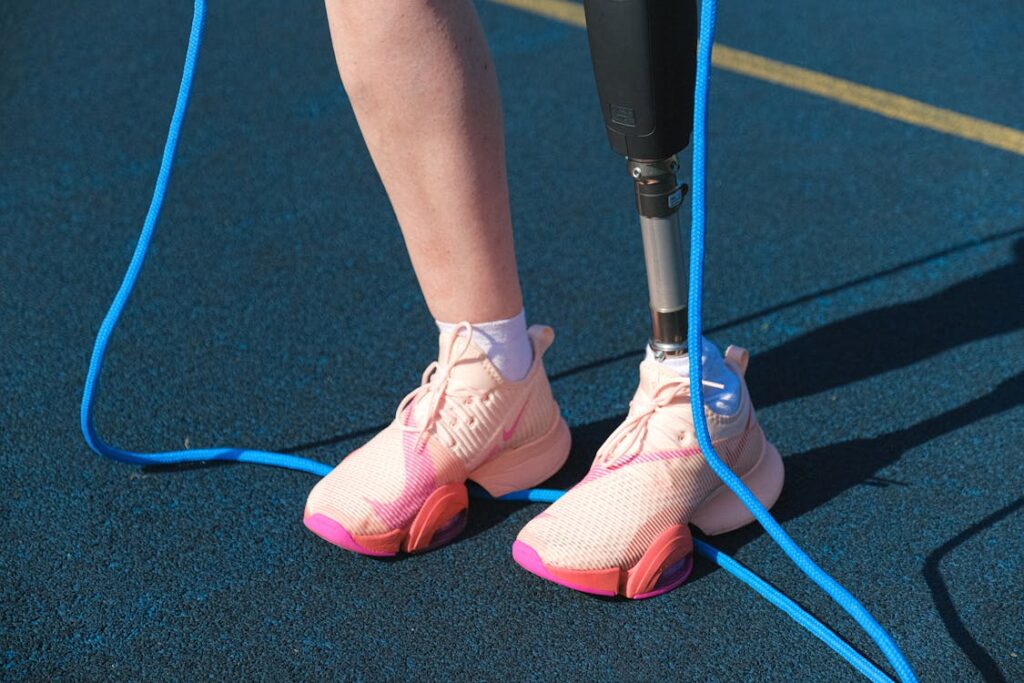
Challenges and Limitations of Bionic Prosthetics in Sports
While bionic prosthetics offer many benefits to athletes, they are not without their challenges. Despite advancements in technology, there are limitations that may affect their performance in high-impact sports.
From durability concerns to cost and regulatory issues, athletes must consider several factors before choosing a bionic limb for competitive use.
Durability and Impact Resistance
Sports put extreme stress on the body, and prosthetic limbs need to withstand intense physical activity. Traditional sports prosthetics are often made from carbon fiber and other high-strength materials designed to absorb shock and endure repeated impact.
However, bionic prosthetics contain sensitive electronic components, microprocessors, and battery-powered motors, which may not be as resistant to rough conditions.
Contact sports like football, wrestling, or martial arts pose a challenge for bionic limbs. A hard hit could damage delicate sensors or disrupt the internal electronics, leading to malfunctions or breakdowns.
While some bionic limbs are reinforced to handle moderate impacts, they may still require more maintenance and repairs compared to mechanical prosthetics.
Athletes who participate in extreme outdoor sports like rock climbing, mountain biking, or obstacle courses may also find that exposure to dust, water, and rough terrain can affect the longevity of their prosthetic.
Although some models are designed to be weather-resistant, few bionic limbs are completely waterproof or dustproof, which can limit their usability in certain conditions.
Battery Life and Dependence on Power
One of the biggest differences between bionic and traditional prosthetics is that bionic limbs require power to function. Most models rely on rechargeable batteries, which can last anywhere from a few hours to a full day, depending on usage.
For athletes who train or compete for long periods, managing battery life becomes an essential factor.
Endurance sports, such as long-distance running, triathlons, or cycling, require a prosthetic to function consistently for extended durations. If the battery runs out mid-event, the prosthetic could lose its responsiveness or stop functioning entirely.
Some athletes carry backup batteries, but swapping out power sources in the middle of a competition is not always practical.
This reliance on power means that athletes must carefully plan their training and events around battery life. Unlike traditional prosthetics, which function indefinitely with minimal adjustments, bionic limbs require regular charging and maintenance to perform at their best.
Weight and Speed Limitations
While bionic limbs are designed to mimic natural movement, they are often heavier than purely mechanical sports prosthetics. The added weight comes from motors, sensors, and battery packs, which can make high-speed movements more challenging.
For sprinters or athletes who rely on explosive speed, this extra weight may be a disadvantage compared to lightweight carbon fiber running blades.
In competitive running, many top Paralympic athletes use mechanical running blades instead of bionic legs because they offer greater energy return.
Running blades store energy during foot strikes and release it for propulsion, mimicking the spring-like action of tendons. Bionic legs, while highly adaptive, do not yet offer the same level of speed and power return as mechanical sports prosthetics.
Cost and Accessibility
Bionic prosthetics are among the most advanced assistive devices available, but this technology comes at a price. The cost of a high-performance bionic limb can be significantly higher than a traditional sports prosthetic.
Many insurance providers do not fully cover bionic limbs, especially for athletic use, making them inaccessible to many individuals.
Additionally, maintenance and repairs can be expensive. Since bionic prosthetics contain advanced electronics, fixing a damaged limb may require specialized technicians and replacement parts that are not always readily available.
Athletes who compete frequently may face additional costs for upkeep, which can become a financial burden over time.
In contrast, mechanical sports prosthetics, while still costly, have fewer complex components and are often more durable. Many professional athletes prefer them for their reliability and ease of maintenance, especially in high-impact sports.
Regulatory and Competitive Restrictions
Another challenge athletes face with bionic prosthetics is competition regulations. Sports organizations have strict rules regarding prosthetic use, particularly in professional and Paralympic competitions.
Some governing bodies restrict the use of bionic limbs if they are considered to provide an unfair advantage.
For example, certain sports federations only allow passive prosthetics, meaning that powered or motor-assisted devices may not be permitted.
This is a significant limitation for athletes who rely on bionic limbs, as they may be required to compete with non-powered alternatives.
Even outside of professional sports, some competitions have classification systems that determine eligibility based on prosthetic function. Athletes using bionic limbs may be placed in different categories or face additional scrutiny regarding their performance.
These rules can sometimes discourage athletes from using bionic prosthetics in high-level competition.
Should Athletes Choose Bionic Prosthetics?
The decision to use a bionic prosthetic in sports depends on several factors, including the type of sport, the athlete’s personal needs, and competition rules.
While bionic limbs offer superior adaptability, control, and comfort, they also come with limitations in durability, battery life, and cost.
For athletes in skill-based sports like archery, golf, or adaptive weightlifting, a bionic limb can provide a competitive advantage by improving precision and grip control.
However, for high-impact or endurance-based sports, traditional sports prosthetics may still be the better choice due to their durability, lightweight design, and energy efficiency.
As technology continues to evolve, bionic prosthetics will become more advanced, durable, and sport-friendly. Researchers are already working on lighter materials, longer-lasting batteries, and AI-driven systems that can improve performance.
In the future, bionic limbs may reach a point where they are just as competitive as mechanical sports prosthetics.
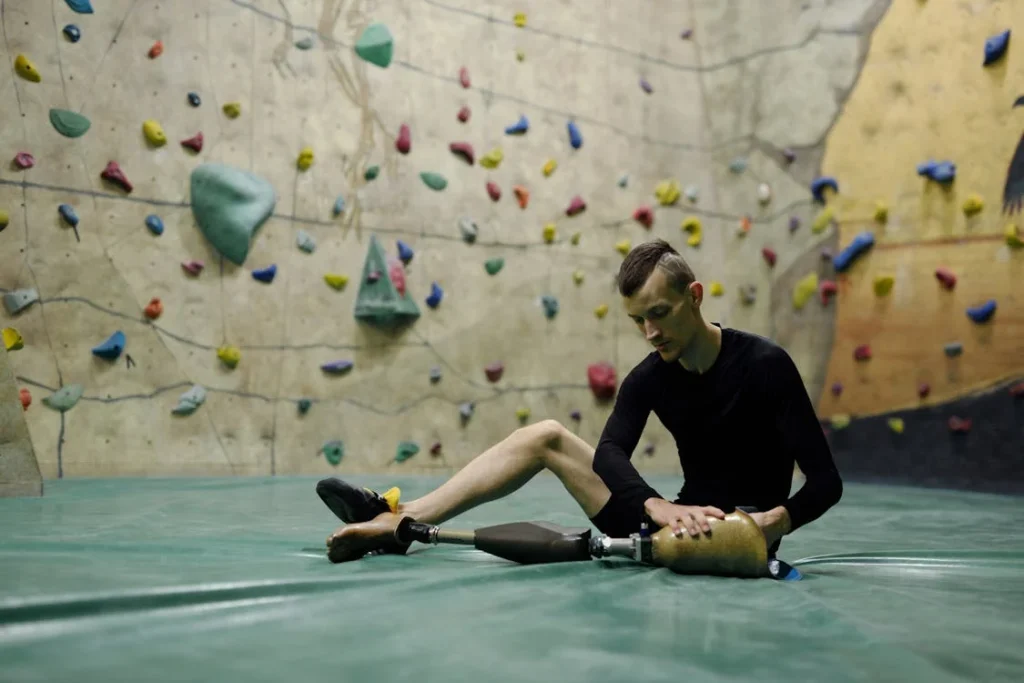
The Future of Bionic Prosthetics in Sports
Bionic prosthetics have already transformed the lives of many athletes, but the future holds even greater possibilities.
With rapid advancements in technology, we are moving toward a time when bionic limbs could be as efficient—if not superior—to traditional sports prosthetics.
The next generation of bionic limbs will focus on improving speed, power, durability, and overall performance, making them more suited for competitive sports.
Lighter and Stronger Materials
One of the main challenges of current bionic prosthetics is their weight. The motors, sensors, and battery components make them heavier than traditional prosthetics, which can slow down movements in high-speed sports like sprinting or long-distance running.
Future designs are expected to incorporate lightweight yet durable materials, such as graphene-based composites and next-generation carbon fiber. These materials will allow bionic limbs to be lighter without compromising strength or durability.
Additionally, researchers are working on self-repairing materials that can heal minor damages on their own. This innovation would reduce maintenance costs and improve the longevity of bionic limbs, making them more reliable for athletes who train intensively.
Longer Battery Life and Energy Harvesting
Battery life is one of the biggest limitations of bionic prosthetics in sports. Current models require frequent charging, which can be inconvenient for athletes who train or compete for extended periods. However, future developments in battery technology could change this.
Scientists are working on energy-efficient batteries that last longer while maintaining high performance. Additionally, some researchers are exploring the idea of energy-harvesting prosthetics—devices that generate power from movement.
This could mean that every step an athlete takes would recharge the battery, eliminating the need for external charging.
Another promising innovation is wireless charging technology. In the future, athletes may be able to recharge their prosthetics simply by standing on a charging pad or using wearable power sources integrated into their clothing.
These advancements will remove one of the biggest drawbacks of bionic prosthetics and make them more practical for high-performance sports.
AI-Powered Performance Enhancements
Artificial intelligence is already playing a role in bionic prosthetics, but its potential is far from fully realized. Future AI-driven prosthetics will not only respond to muscle signals but also anticipate movements based on an athlete’s past performance.
This predictive technology will allow for even smoother and more natural motion, making bionic limbs feel more like real extensions of the body.
Some research teams are working on AI-powered feedback systems that can analyze an athlete’s technique in real time. This means a bionic limb could provide instant feedback on running form, grip strength, or balance, helping athletes fine-tune their performance.
Over time, the AI could learn from the athlete’s unique movement patterns and automatically adjust settings to optimize performance.
Neural Integration and Brain-Controlled Prosthetics
One of the most exciting frontiers in prosthetic technology is direct neural integration, where bionic limbs are controlled by brain signals rather than muscle movements.
Scientists are developing brain-machine interfaces (BMIs) that allow prosthetic users to move their artificial limbs as naturally as they would a biological limb. This breakthrough will make bionic limbs more intuitive, responsive, and efficient for athletes in all sports.
With better neural integration, athletes will experience faster reaction times and more precise control over their movements. This could give bionic prosthetic users a competitive edge in skill-based sports like fencing, table tennis, or even e-sports, where reaction speed is critical.
The Future of Sports Regulations
As bionic prosthetics become more advanced, sports organizations will need to update their rules and regulations. Currently, some high-tech prosthetics are restricted in professional competitions due to concerns over unfair advantages.
However, as technology improves, governing bodies may introduce new classification systems that allow for fair competition while still embracing innovation.
In the future, we could see separate divisions for athletes using advanced bionic limbs, similar to how the Paralympics categorizes competitors based on their level of ability.
Some experts even predict that in the coming decades, cybernetic sports leagues could emerge, where athletes with bionic enhancements compete at the highest levels using cutting-edge technology.
A New Era for Adaptive Athletes
The future of bionic prosthetics in sports is incredibly promising. As technology continues to evolve, athletes with limb loss will have access to more powerful, efficient, and durable prosthetic solutions.
These innovations will break down barriers, allowing more people to compete at an elite level without limitations.
At Robobionics, we are committed to advancing prosthetic technology and ensuring that athletes have access to the best solutions available. Whether you’re looking for a high-performance prosthetic for sports or just exploring your options, we’re here to help.
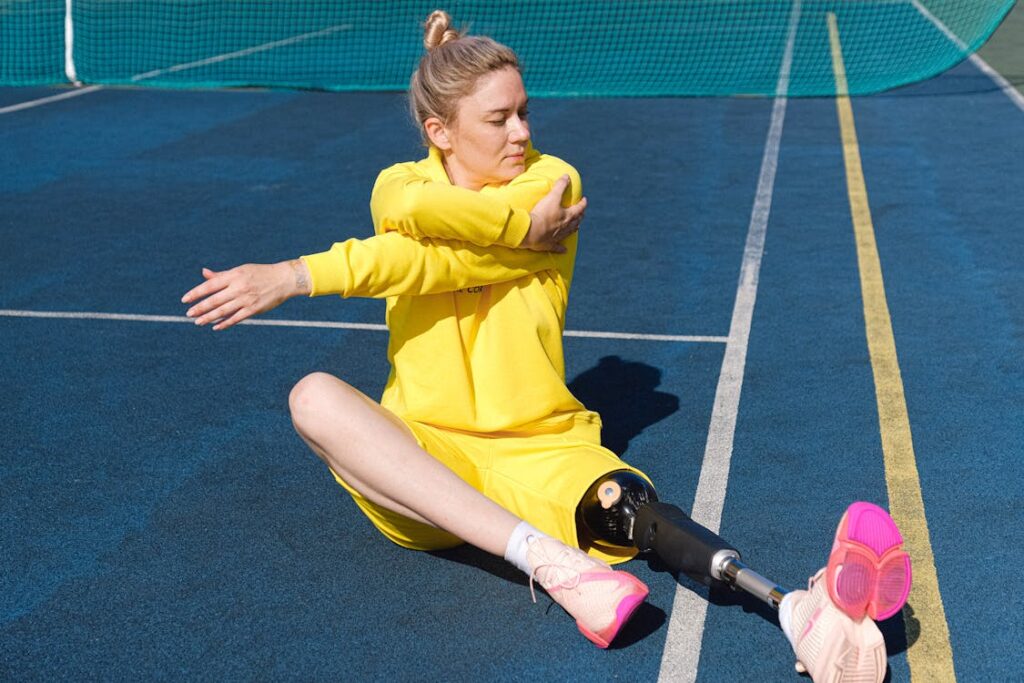
Psychological and Emotional Impact of Bionic Prosthetics on Athletes
Bionic prosthetics do more than restore physical function; they also have a profound impact on the mental and emotional well-being of athletes. Competing in sports after limb loss requires not only physical adaptation but also a shift in mindset.
Confidence, self-identity, and the way athletes perceive their abilities can change dramatically with the right prosthetic. The introduction of bionic limbs has given many individuals a renewed sense of purpose, but the transition is not always easy.
Rebuilding Confidence in Sports Performance
For many athletes, limb loss can lead to uncertainty about their future in sports. Questions like Will I ever compete again? or Can I perform at the same level as before? are common concerns.
Bionic prosthetics provide an opportunity for athletes to regain confidence by allowing them to move, train, and compete in ways that feel natural and intuitive.
Unlike traditional prosthetics, which require manual adjustments and adaptation, bionic limbs respond dynamically to the user’s intent. This responsiveness can help athletes trust their prosthetic more quickly, reducing hesitation and improving overall performance.
Knowing that a prosthetic limb can keep up with their movements makes athletes feel more in control, which directly impacts their confidence on the field.
Overcoming Mental Barriers and Fear of Injury
Returning to sports after limb loss can bring fear—fear of falling, reinjury, or not being able to perform at the same level. Many athletes struggle with the mental aspect of adapting to a prosthetic, especially in high-impact or fast-paced sports.
Bionic prosthetics, with their advanced stabilization and movement control, help reduce some of these concerns.
For example, a bionic knee can detect and adjust to uneven terrain in real time, helping runners avoid falls. A bionic hand with an adaptive grip can provide a firm hold on sports equipment, preventing accidents that might occur with traditional prosthetics.
These technological advancements offer reassurance to athletes, helping them push past mental barriers and focus on their sport.
Sports psychologists often emphasize the connection between confidence and performance. The more comfortable an athlete feels with their prosthetic, the more likely they are to take risks, refine their skills, and compete at a high level.
By improving balance, coordination, and predictability, bionic limbs help athletes develop the trust they need to perform at their best.
Shifting Perceptions of Disability in Sports
Bionic prosthetics are also changing the way society views disability in sports. Athletes who once faced limitations are now competing at elite levels, proving that limb loss does not mean the end of an athletic career.
With each competition, adaptive athletes challenge outdated perceptions and inspire others to pursue their passions despite physical challenges.
The rise of bionic prosthetics in sports has contributed to greater media coverage and visibility for athletes with disabilities. Events like the Paralympics and adaptive sports competitions showcase incredible performances that redefine what is possible.
As technology continues to improve, the gap between able-bodied and adaptive athletes is narrowing, pushing the boundaries of human potential.
The Role of Support Systems in an Athlete’s Journey
Adapting to a bionic prosthetic for sports is not just a physical process; it requires strong emotional support. Coaches, teammates, family members, and prosthetists all play a crucial role in helping athletes navigate their journey.
Encouragement and guidance from experienced professionals can make the transition smoother, reinforcing the idea that an athlete’s abilities are not defined by their limb loss.
Athletes who receive mentorship from others who have gone through similar experiences often find it easier to adjust. Seeing others succeed with bionic prosthetics provides motivation and proof that returning to competitive sports is possible.
Many sports organizations now offer training programs and mental health support to help adaptive athletes build resilience and confidence.
The Emotional High of Returning to Competition
For many athletes, stepping onto the field, track, or court after adapting to a bionic prosthetic is an emotional milestone. The journey from injury or limb loss to full competition is filled with challenges, but the reward of overcoming them is immense.
Athletes describe the feeling as liberating—being able to move freely, compete with intensity, and push themselves to new limits.
This emotional connection to sports is a driving force for many adaptive athletes. The ability to return to the game they love, perform at a high level, and prove their capabilities is more than just a personal achievement—it’s a statement that technology and determination can break down barriers.
Bionic prosthetics are not just tools for mobility; they are instruments of empowerment. They allow athletes to reclaim their identity, redefine their limits, and inspire others to see ability rather than disability.
As technology continues to evolve, the emotional and psychological benefits of these prosthetics will only grow stronger, making them a life-changing solution for athletes who refuse to let limb loss hold them back.

Conclusion
Bionic prosthetics have redefined what is possible for athletes with limb loss. With advanced technology, better control, and adaptability, they provide an opportunity to compete at high levels and push the boundaries of human performance. However, they also come with challenges, such as durability concerns, battery limitations, and cost. While traditional sports prosthetics remain a strong choice for high-impact activities, the future of bionic limbs is promising, with lighter materials, AI-driven enhancements, and brain-controlled prosthetics on the horizon.
Beyond the physical benefits, bionic prosthetics empower athletes mentally and emotionally, restoring confidence, independence, and the drive to compete. They challenge outdated perceptions of disability in sports and prove that innovation can level the playing field. As technology advances, sports organizations and insurance providers must adapt to ensure that all athletes have access to the best possible solutions.
At Robobionics, we are committed to helping athletes find the right prosthetic to match their goals. Whether you’re looking for a high-performance limb or need guidance on the best option for your sport, we’re here to support your journey. Book a free consultation today and take the next step toward unlocking your full potential.



